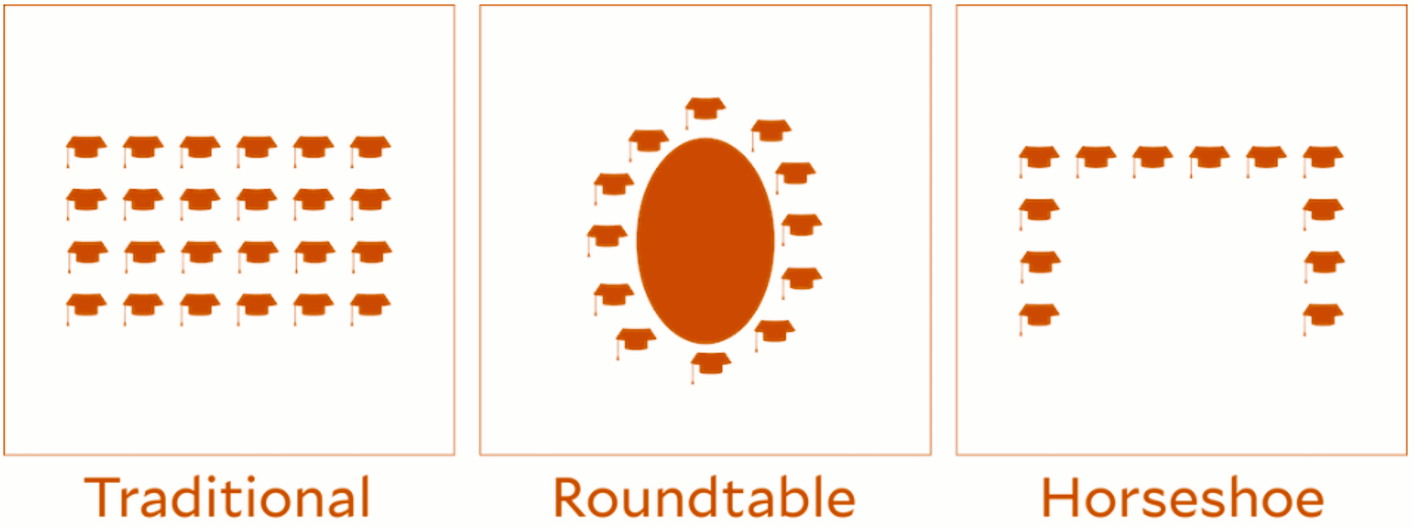Overview of classroom seating arrangement styles
Traditional
The traditional lecture setup typically consists of rows of fixed seating where learners face the teacher with their backs to one another. The highest communication interactions between teachers and learners typically occurs with learners in the first row or along the middle of the classroom.
Roundtable
A classroom seating arrangements may consist of learners sitting in a circle or around a single large table. This seating arrangement can also be formed using individual desks. Learners and teachers all face one another in this setup, which can support whole-class as well as pair-wise dialogue.
Horseshoe or Semicircle
The horseshoe or semi-circle offers a modified roundtable setup, where all learners face each other while the instructor can move around the classroom. The horseshoe encourages discussion between learners and with the teachers

Double Horseshoe
This seating arrangement involves an inner and outer horseshoe, and similar to the conventional horseshoe, invites greater discussion than the traditional format. It is more limited by the backs of learners within the inner circle facing learners in the outer circle. However, learners may also more easily interact with those nearest to them or turn around and face learners behind them for group work.
Pods (Groups, Pairs)
The pod or pair arrangement can be designed with learners’ individual desks. With regards to stations, teachers can place several tables together to form learners groups (e.g. 3 - 4 learners), or pairs. This arrangement is useful when learners will work in groups or pairs for a large portion of class time.

Figure 9: Overview of key classroom seating arrangements styles
Classroom seating arrangement Benefits of effective classroom management/organization
